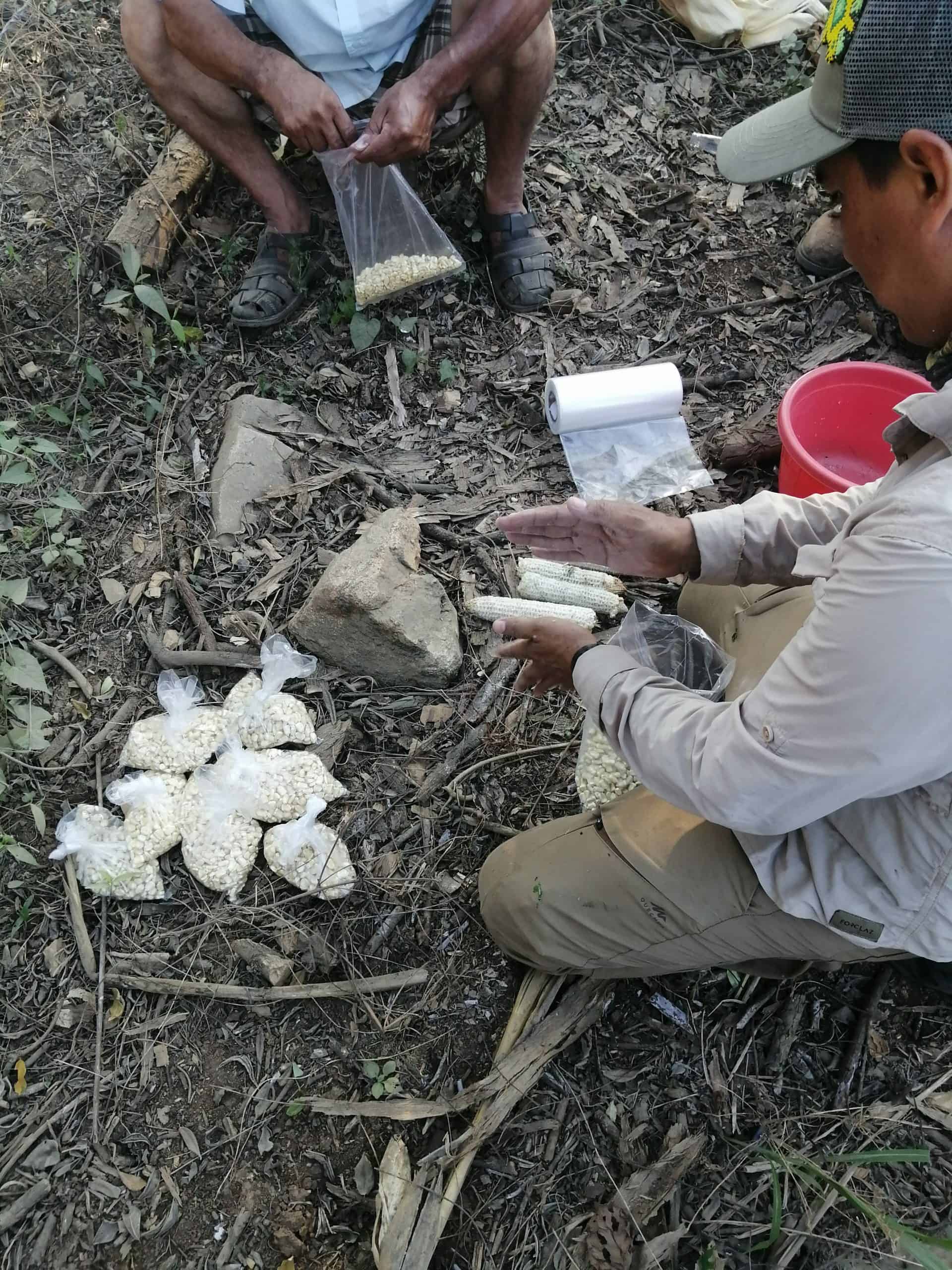Share this article
Wild Cam: Do parakeets cause significant damage to corn?
For years, corn farmers in Mexico have tried to fight the perceived damage to their corn by leaving out poison for birds and other animals, or by shooting them.
Dozens of bird species, like the orange-fronted parakeet (Eupsittula canicularis), might descend on a small crop in the mountains of Oaxaca, gorging on kernels before taking flight again.
Enlarge

Credit: Abigail Santos Canseco
But Dayane Arlette Puente, who just finished her master’s degree at the University of the Sea (Universidad del Mar) in Puerto Escondido, Mexico, and her colleagues wanted to see how much damage these birds were really causing.
In 2021, they set out into the small communities to interview low-income corn growers in Oaxaca, knocking on doors and conducting interviews to learn more about how the farmers perceived the problem.
They learned that the farmers believed that parakeets, other birds and mammals like white-nosed coatis (Nasua narica) and raccoons (Procyon lotor) caused significant damage to their crops.
“The birds were the ones with which they had the most problems,” Arlette Puente said.
Enlarge

Credit: Dayane Arlette Puente
To control the problem, many farmers set out poison to deal with the perceived issue. But this poison often killed indiscriminately, affecting species like this northern tamandua (Tamandua mexicana).
As detailed on a research poster presented at The Wildlife Society’s virtual 2021 Annual Conference, Arlette Puente and her colleagues conducted observations on the crops of farmers who volunteered to participate in the study to better understand what was going on with the birds.
Enlarge

Credit: ryanacandee
They found that three species in particular raided crops. The orange-fronted parakeet pictured above, the golden-cheeked woodpecker (Melanerpes chrysogenys) and the white-fronted magpie jay (Calocitta formosa).
Enlarge

Credit: Dayane Arlette Puente
The researchers also measured the corn production for the growing season, from July to December, in the areas they watched. They found that the birds ate or damaged a minimal amount of corn. In crops close to wooded areas, they ate only 5.3% of the corn, while in crops farther from wooded areas, they ate 3.6%, on average.
Arlette Puente said that some of the corn consumption may occur due to habitat loss. Many farmers in this region use a slash-and-burn style of agriculture, rotating their crops every few years. In areas where the birds have lost more habitat, they are likely to substitute corn as part of their diets since more natural forms of food aren’t available.
The woodpeckers may be especially affected by crop rotation, Arlette Puente said, since this species normally is thought to be insectivorous.
Enlarge

Credit: Dayane Arlette Puente
One of the benefits of doing this research, Arlette Puente said, is that the farmers were directly informed of the results of the work. Growing corn is the main resource for many of the people in these communities, so losing even a small amount can have a large effect on their livelihood. But the International Union for Conservation of Nature considers the orange-fronted parakeet vulnerable—it’s only found in the Sierra Madre del Sur in Mexico down to Costa Rica.
“After we did the study, the farmers noticed that the birds weren’t doing as much harm as they thought,” she said.
To try to decrease the conflict between farmers and birds in the area, Arlette Puente said, the researchers are now seeking funding to improve education about non-lethal ways to decrease the poisoning of birds and other wildlife using visual and sound deterrents. These techniques can include everything from using kites, balloons, metallic streamers or other materials to scare birds. Old CDs can even work, as can patrols during key times when birds are likely to feed.
While birds eat some corn, Arlette Puente said, often the damage is minimal, and the damaged ears could still be used to feed chickens or livestock on the farms.
Enlarge

Credit: Rolf Riethof
Header Image: Researchers interviewed farmers about the problem with birds eating their crops. Credit: Iris Zarate Bustos








